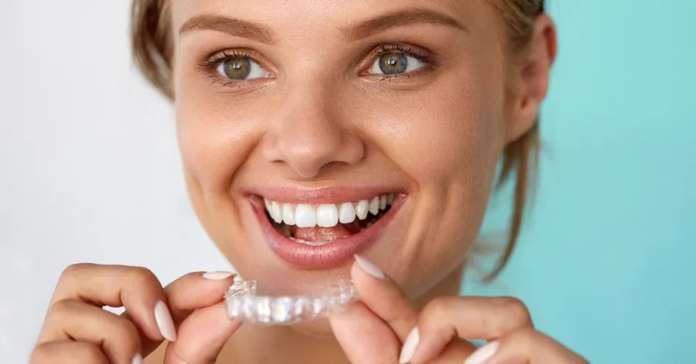If you’re considering Invisalign to straighten your teeth, you’re probably wondering how it all works. For years, metal braces have been the go-to option for correcting misaligned teeth, but Invisalign is now a popular alternative that uses clear, removable aligners to gradually move teeth into the desired position.
What is Invisalign?
Invisalign is a clear aligner that is used to straighten teeth. It uses a series of clear, removable aligners that are custom-made for each individual. The Invisalign system consists of two parts: the dental impression and the treatment plan. The dental impression is used to create a three-dimensional model of your teeth. The treatment plan is created by your orthodontist and includes the placement of the aligners on your teeth.
Invisalign is made of a smooth, comfortable material that is barely noticeable. The aligners are often made of a clear plastic called polyethylene terephthalate glycol (PETG). PETG is a food-grade plastic that is safe to wear in your mouth. This material is also used in food packaging and medical devices.
How does Invisalign work?
Invisalign works by gradually moving your teeth into the desired position. The aligners are made of a smooth, comfortable material that is barely noticeable. They are worn for 20-22 hours per day and are removed for eating and brushing your teeth. As you wear each set of aligners, your teeth will slowly move into the desired position.
If you have misaligned teeth, gaps in your teeth, or an overbite, Invisalign may be a good option for you. Your orthodontist will be able to assess your individual case and determine whether Invisalign is the right treatment for you.
What is the difference between Invisalign and traditional braces?
Invisalign is a clear aligner that is used to straighten teeth. Traditional braces are metal brackets that are glued to your teeth. Invisalign is removable, so you can take them out for eating and brushing your teeth. Traditional braces are not removable, so you have to be careful about what you eat and how you brush your teeth. Invisalign is also less visible than traditional braces.
If you’re considering Invisalign to straighten your teeth, talk to your orthodontist about whether it’s the right treatment for you. Invisalign may be a good option if you have misaligned teeth, gaps in your teeth or an overbite. Traditional braces may be a better option if you have more severe misalignment, such as crooked teeth or an underbite.
What is the Invisalign treatment process like?
The Invisalign treatment process begins with a consultation with your orthodontist. During the consultation, your Invisalign dentist will assess your individual case and determine whether Invisalign is the right treatment for you. If you decide to move forward with Invisalign, your orthodontist will take a dental impression of your teeth. The dental impression is used to create a three-dimensional model of your teeth.
Your orthodontist will then create a treatment plan that includes the placement of the aligners on your teeth. You will be given a series of clear, removable aligners that you will wear for 20-22 hours per day. As you wear each set of aligners, your teeth will slowly move into the desired position. The entire treatment process usually takes between nine and 15 months.
After the treatment is complete, you will be given a retainer to wear at night. The retainer is used to keep your teeth in their new, desired position.
What are the main benefits of Invisalign treatments?
One of the main benefits of Invisalign is that the aligners are clear and barely noticeable. This means that you can straighten your teeth without anyone knowing that you’re wearing aligners. Invisalign is also removable, so you can take them out for eating and brushing your teeth. Another benefit of Invisalign is that the treatment is often faster than traditional braces. This is because each set of aligners is worn for a shorter period of time. Last but not least, Invisalign treatments are often more comfortable than traditional braces.
If you’re considering Invisalign to straighten your teeth, talk to your orthodontist about whether it’s the right treatment for you. Invisalign may be a good option if you have misaligned teeth, gaps in your teeth or an overbite.
Also, Read More About – Rabeprazole Sodium and Domperidone Capsules Uses in Hindi
